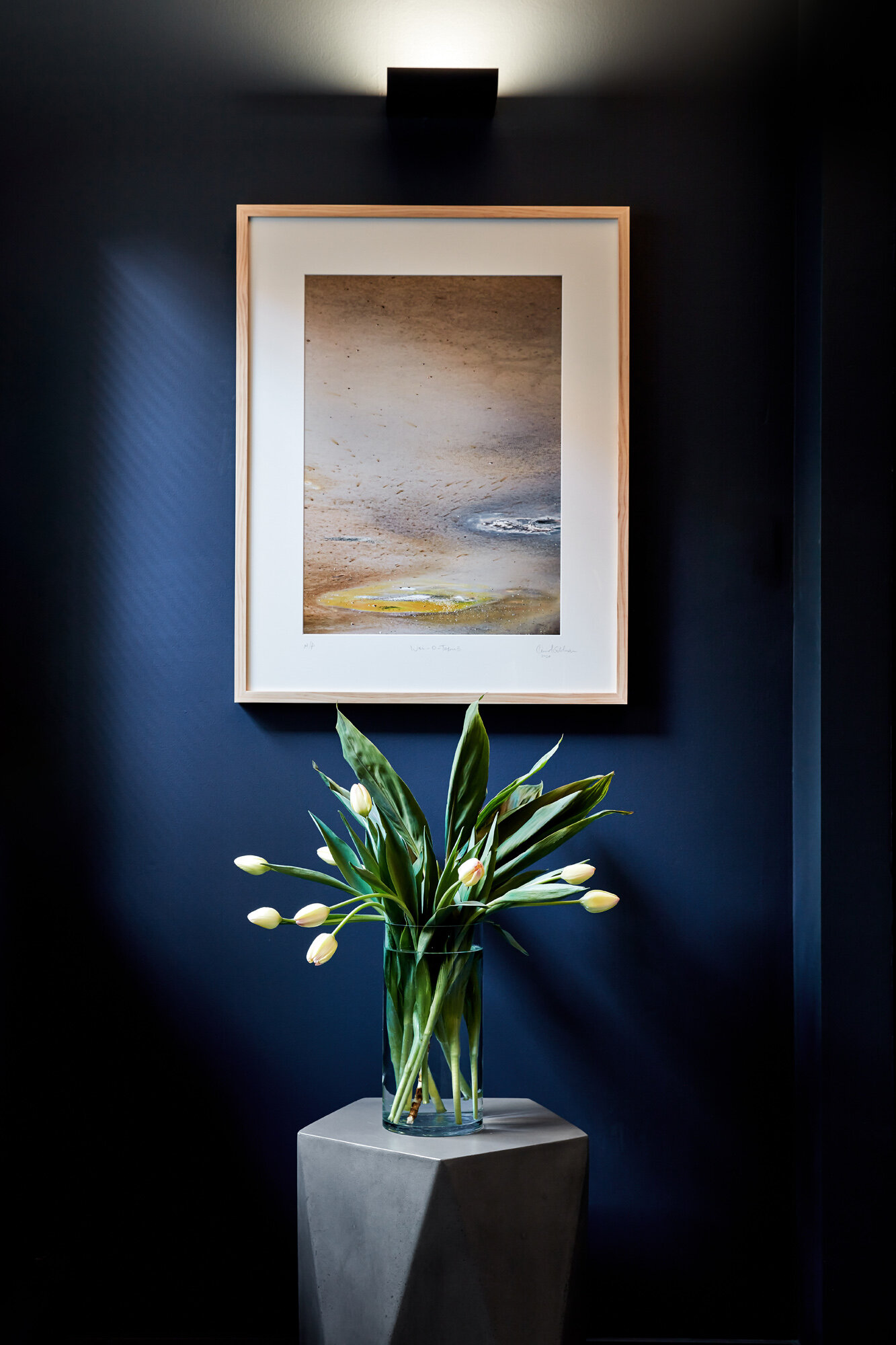Artworks
An artwork in the context of this thesis is a piece of music, painting, photograph, sculpture or other product of the creative arts that is used to facilitate reverie. Music, sculpture and visual art is chosen on the basis of its strong imaginative or aesthetic appeal. Below are artworks used in my psychoanalytic office. Most of the photographs included in this website I have taken during trips to Japan, New Zealand, Europe and also within Australia.
“Freud began collecting antiquities shortly after his father‘s death in 1896, and proceeded to surround himself with “disinterred objects” (death masks, funeral vases, bronze coffins, mummy portraits), creating a space of loss and absence, grief and memory, elegy and mourning… an exteriorised theatre of his own emotional history and preoccupation with death.
But Freud’s collecting was also informed by his Enlightenment ideals: restoring value to discarded or neglected texts and objects, adding to a universal and public cultural heritage, and championing the value of remembering. These ideals are instantiated and inculcated with the analyst’s invitation to lie on the couch and free-associate. ”
“Freud’s office was full of furnishings, carpets, decorative objects, and relics able to give clear indications of the taste and cultural interests of the analyst. By exhibiting his collections, Freud was literally able to reveal things about himself. That is to say, he was able to disclose himself and thus to permit to ideally put together the past of the single person and that of civilisation.”
Below are some decorative objects on display in my consulting room. Like the music of the waiting room, they can set a mood. It is said that every psychoanalytic office is somehow homage to Freud himself.
The art of Morton Feldman, integrating sound and image – An inspiration for Uµ
“The more I listen to Feldman, the more I find him, like Rothko, an artist on the brink of a sea change; an artist who, for all of his radicalism, remained true to long-held principles. His ethereal sound world, stripped to absolute essentials, is still a comment upon, and continuation of, Western art music. If he differs strongly with European modernism, he is still in conversation with it, rather than rejecting it entirely. He is simply offering an alternate path, drawing from the same principles and tradition.
There’s also a decided sensuousness in Feldman’s work. Hardly less abstract than that of John Cage, Feldman’s music still meets us on an emotional level. It is both spiritual and of the flesh. It gets inside us in touches a deep aesthetic core, no matter how slowly. As with Debussy, the effect is haunting – otherworldly and familiar.
Listening to Feldman‘s work, one can feel how deeply he understood Rothko’s paintings. Perhaps ironically, the place that understanding is most patent is in his extensive use of silence. This silence is by no means empty but deeply resonant, echoing with what has come before and the possibilities of what may happen next. It is essentially congruent to Rothko’s use of space.”
Feldman’s Silence = Rothko’s Space
“Like Rothko’s expanses, Feldman’s silences are not voids; they are pregnant with ideas in the process of becoming. And if the listener is an integral part of bringing those ideas to fruition, it is by no means a matter of free association. Feldman has, like Rothko, suggested directions, set an emotional tone, begun a discourse that is highly specific even as it allows for many responses and asks a great number of questions.”















